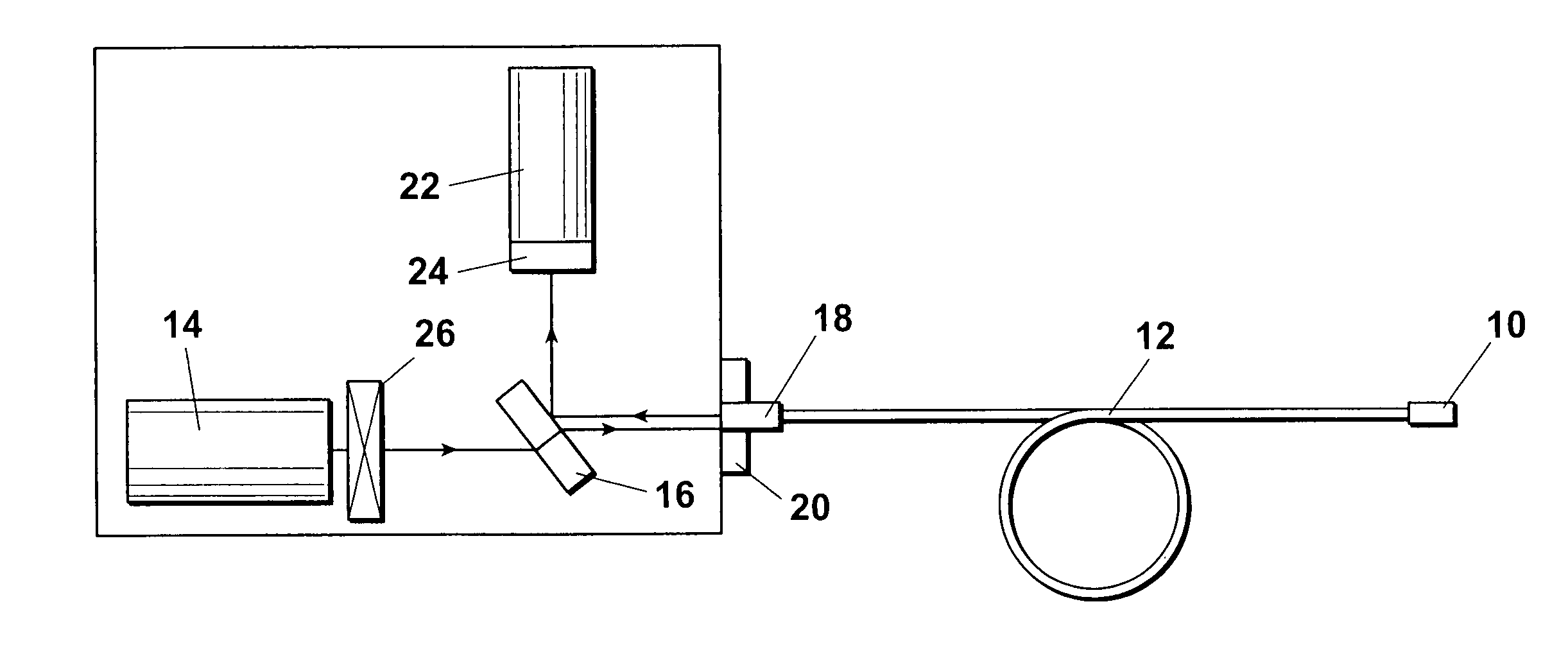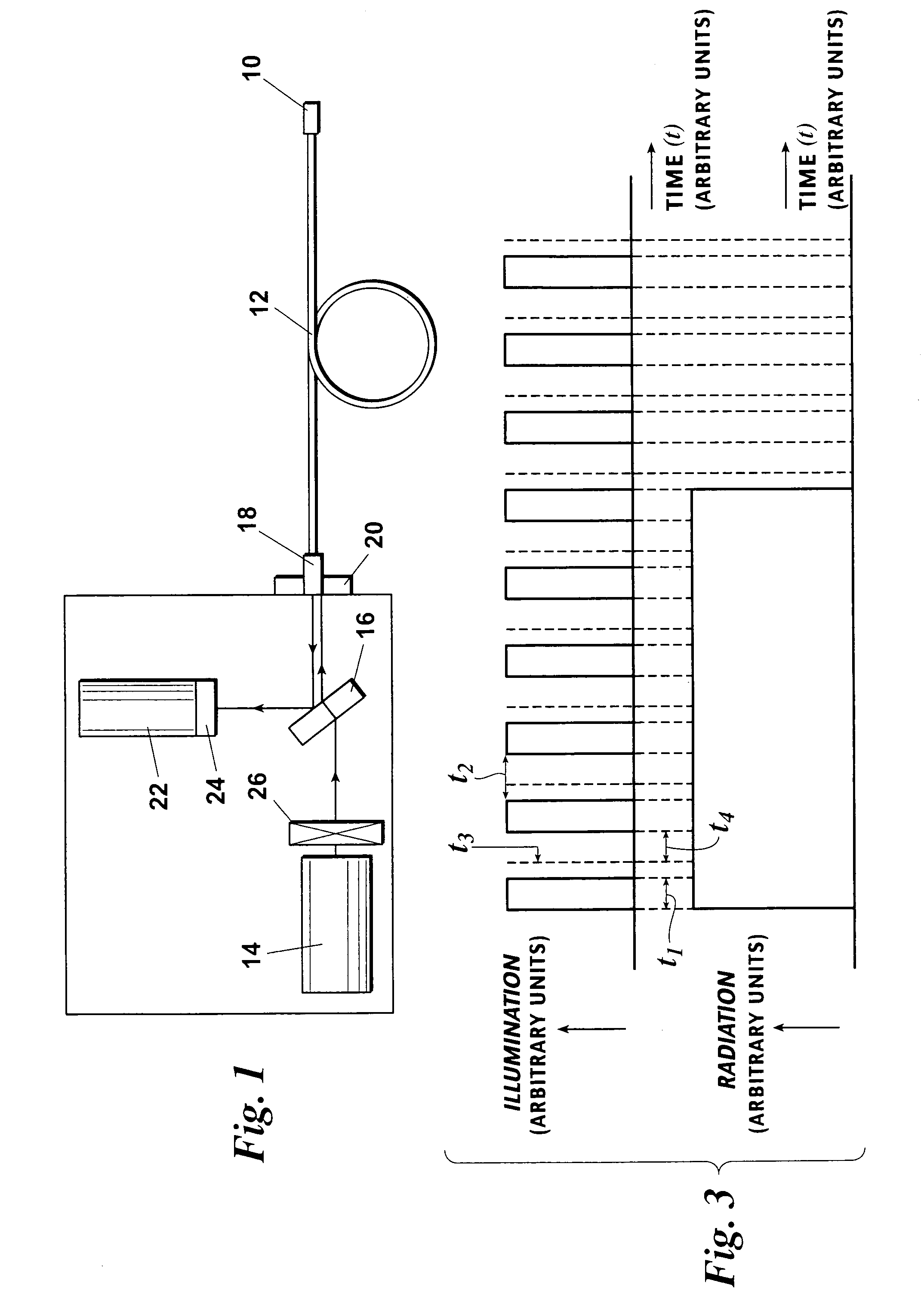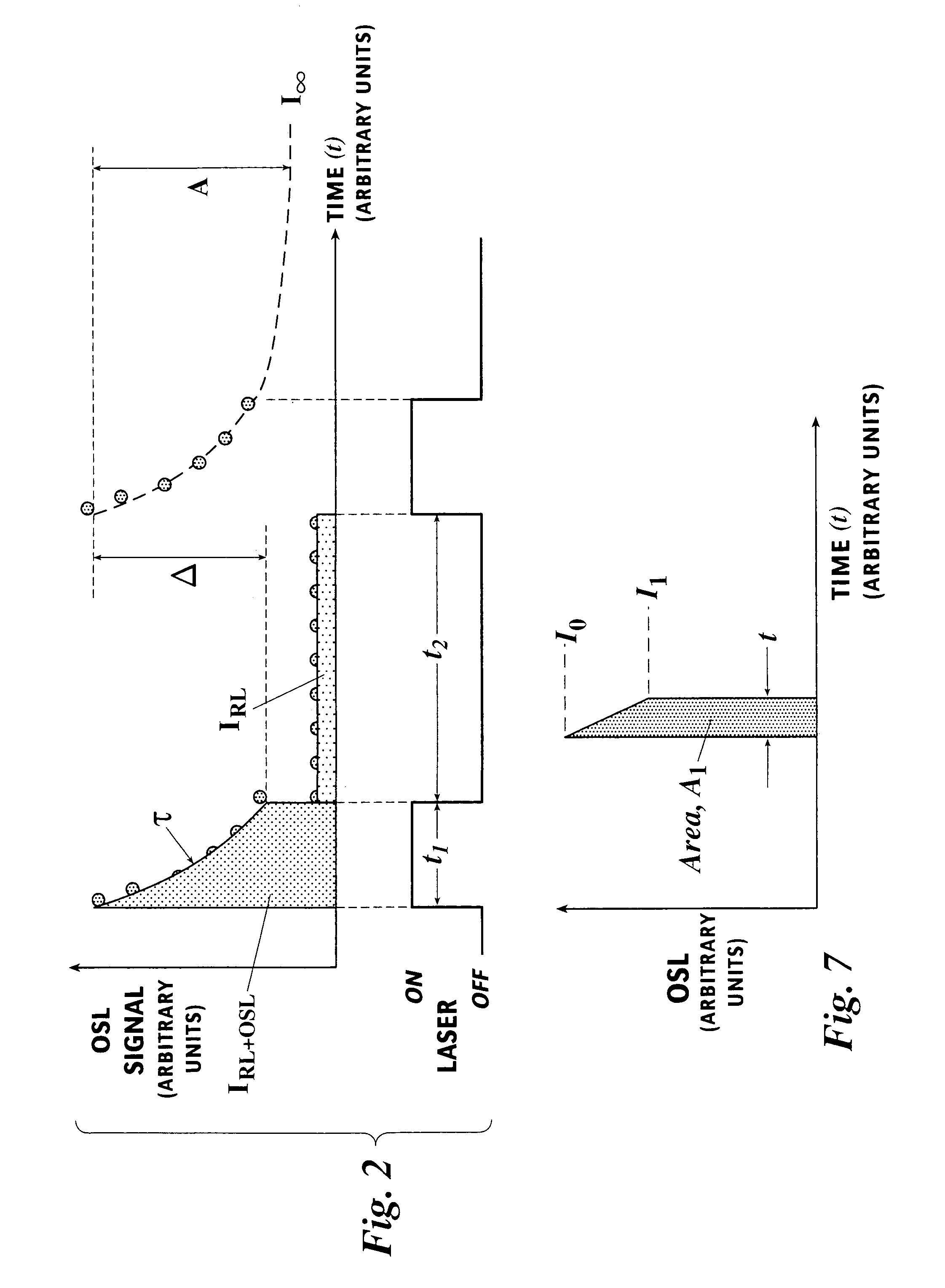Optically stimulated luminescence radiation dosimetry method to determine integrated doses and dose rates and a method to extend the upper limit of measureable absorbed radiation doses during irradiation
- Summary
- Abstract
- Description
- Claims
- Application Information
AI Technical Summary
Benefits of technology
Problems solved by technology
Method used
Image
Examples
Embodiment Construction
[0022]Referring now to the drawings, wherein like reference numerals indicate the same parts throughout the several views, there is provided a preferred system and method for determining integrated does and does rates and a method to extend the upper limit of measurable absorbed radiation does during irradiation.
Preferred Apparatus
[0023]The equipment and method used for measuring the OSL signal during irradiation is preferably as follows. An Al2O3 single crystal is connected to the end of a fiber optic cable. The crystal is placed inside a radiation field. Preferably, light from a Nd:YAG laser (532 nm) is transmitted down the fiber to stimulate the crystal. Luminescence from the crystal is transmitted back up the fiber and is directed into a photomultiplier tube (PMT). Filters are used to prevent the light from the laser being directly detected by the PMT, which only sees the luminescence from the Al2O3 crystal.
[0024]FIG. 1 contains a preferred hardware arrangement suitable for use ...
PUM
 Login to View More
Login to View More Abstract
Description
Claims
Application Information
 Login to View More
Login to View More - R&D
- Intellectual Property
- Life Sciences
- Materials
- Tech Scout
- Unparalleled Data Quality
- Higher Quality Content
- 60% Fewer Hallucinations
Browse by: Latest US Patents, China's latest patents, Technical Efficacy Thesaurus, Application Domain, Technology Topic, Popular Technical Reports.
© 2025 PatSnap. All rights reserved.Legal|Privacy policy|Modern Slavery Act Transparency Statement|Sitemap|About US| Contact US: help@patsnap.com



